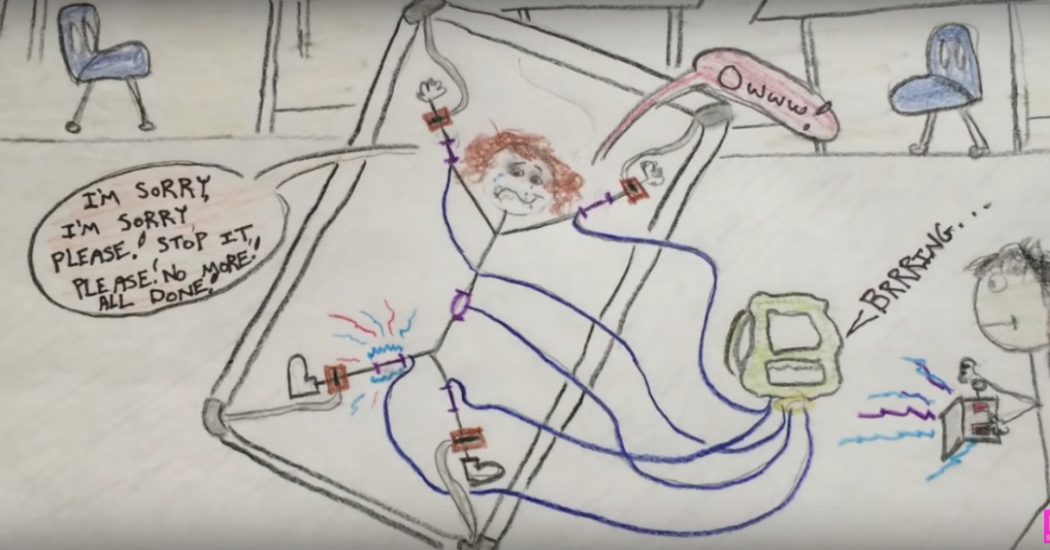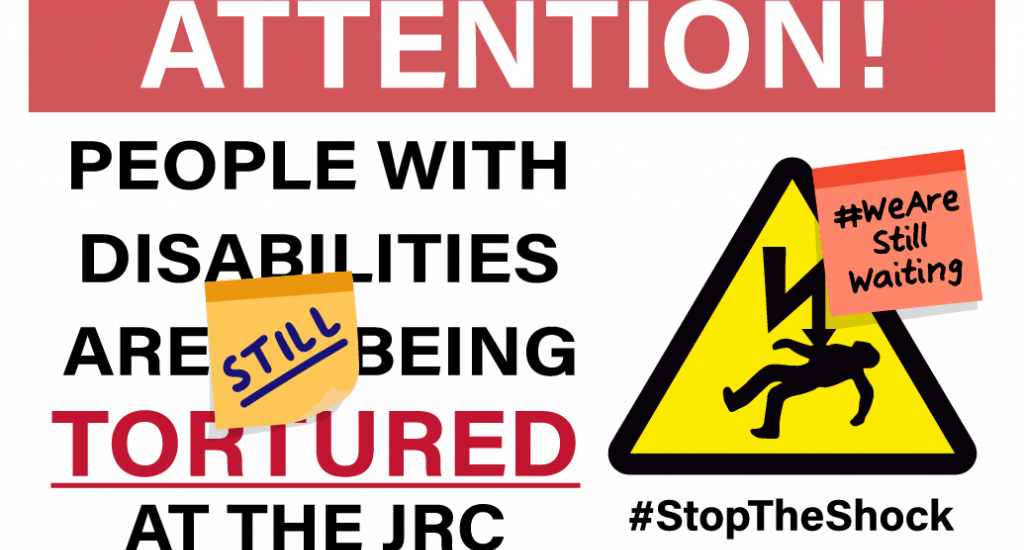
KJIPUKTUK (Halifax) – Have you ever been shocked with a police taser? If so, you know how painful it is. Now imagine receiving an electric shock ten times stronger than a police taser.
Well, if you have an intellectual or developmental disability or learning disability you can receive exactly this at the Judge Rotenberg Center, in Canton, Massachusetts.
The shocking history of the Judge Rotenburg Center
The Judge Rotenberg Center (JRC) is a residential institution for children and adults with intellectual and developmental disabilities (I/DD), mental health disabilities, and learning disabilities, including several autistic people. Most residents at the JRC are people of colour.
The JRC is the only place in the United States that uses electric shocks to punish disabled people. The exact device used is called the Graduated Electronic Decelerator (GED), which children and adults are forced to wear on their bodies. The GED can be triggered via remote control to give an electric shock to the person wearing it, and it is done as an “aversive”. This means the pain of the electric shock is used to punish people for doing certain things.
See also: Treating autism as a problem: The connection between Gay Conversion Therapy and ABA
There are two shock aversive devices used at the JRC. The main GED delivers a 15.5-milliamp shock of up to two seconds, and the GED-4 gives shocks of 45.5 milliamps. By comparison, most police tasers deliver shocks of 2.1 or 3.6 milliamps.
The JRC says the GED devices are needed because the residents of the center have a lot of aggressive and self-injurious behaviours. In truth, however, residents of the JRC are often shocked for the most trivial matters. These include, but are not limited to:
- flapping their hands;
- standing up without permission;
- swearing;
- not taking off a jacket;
- making involuntary noises or movements because of their disability;
- putting their fingers in their ears;
- not answering staff quickly enough;
- asking to use the bathroom;
- raising their hands;
- saying “no”
- whispering;
- slouching;
and even
- screaming in pain while being shocked;
- attempting to remove the shock electrodes; and
- reacting in fear to others being shocked.
The electric shocks often cause blistering red spots and other burns on the skin, or make someone unable to move. It also puts the victim at a high risk of PTSD, depression, anxiety disorders, and other mental health issues.
In 2013, the United Nations Special Rapporteur on Torture put out a report rightfully calling the use of the GED “torture.” Then, after a hearing on April 24, 2014, the US Food and Drug Administration (FDA) put out a report asking that the GED be banned completely. The FDA found that the devices are unsafe, cause serious harm, and do not help the people they’re used on in any way. In 2016, the FDA completed a rule to have the GED banned for good, but it was never enacted.
It must be noted that many disability rights activists in the States have been fighting for years to not only get the GED banned, but to have the JRC shut down. Noted autistic activist Lydia Brown has a massive dossier of information on the JRC that can be viewed here. Other groups that have been fighting include ADAPT, the Autistic Women & Nonbinary Network, and the Autistic Self-Advocacy Network, to name only a few.
So what’s the Nova Scotia connection?
A questionable textbook at NSCC
At the Nova Scotia Community College, there is a program called Behavioural Interventions. It is essentially an ABA diploma program. While more than a few autistic people would probably like to see this program disappear completely, that may or may not happen for a while.
One of the textbooks used in the program is “Effective Programs for Treating Autism Spectrum Disorder: Applied Behavioral Analysis Models”. Among other things, the book profiles eight ABA models across the United States. The list of programs profiled is rather curious, and not surprisingly, none of them are popular amongst autistic activists.
But chapter 13 is a profile of….you guessed it, the Judge Rotenberg Center. And it glosses over the many abuses that have taken place at the JRC for many years. It also ignores the efforts of the many, many disability rights activists who have been fighting to get the place shut down.
Now I am well aware that most post-secondary programs do not teach everything in a textbook, so maybe they don’t use that particular chapter at all in the program. Even so, the fact that it uses a textbook that includes a chapter on a place that has been condemned by the United Nations is beyond all reason. (Though it should be noted that the UN ruling came in 2013, and this book was published in 2010.)
Given everything that NSCC does to make neurodivergent and other disabled students feel welcome and to support their success, the fact that a program purportedly meant to “help” disabled people has a textbook with a profile of a treatment approach condemned as torture by the United Nations is beyond the pale.
I would strongly encourage the faculty in the Behavioural Interventions program to review the textbooks currently used, and find a more appropriate replacement. Alternatively, if there’s no other textbook that meets their curriculum requirements, they could find a way to address this issue with their students to have a robust discussion and reflection.
Postscript
On April 24, 2019, the autistic community will hold a wait-in to urge the FDA to finalize its ban on the GED electric shock devices currently used on residents of the Judge Rotenberg Center. To find out what you can do, please contact the Autistic Self-Advocacy Network.

With a special thanks to our generous donors who make publication of the Nova Scotia Advocate possible.
Subscribe to the Nova Scotia Advocate weekly digest and never miss an article again. It’s free!




Skin shock is the pet project of Applied Behavior Analysis (ABA).